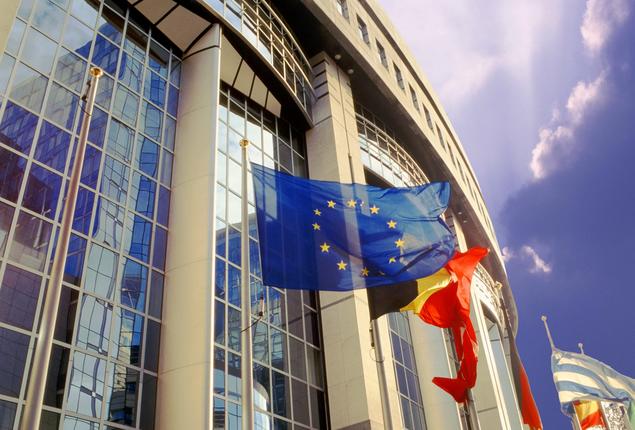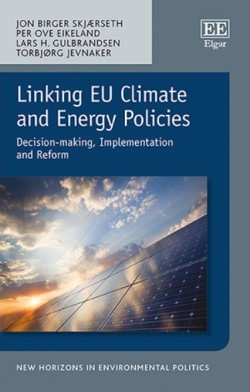Renewed interest for EU energy book

Following good reviews and solid sales, the book 'Linking EU Climate and Energy Policies' is now available in paperback. With ongoing negotiations on the EU ‘winter package’, it is perhaps more relevant than ever.
Linking EU Climate and Energy Policies: Decision-making, Implementation and Reform, written by FNI researchers Jon Birger Skjærseth, Per Ove Eikeland, Lars H. Gulbrandsen and Torbjørg Jevnaker, has received praise by reviewers since it came out in 2016:
 One reviewer calls it an “ambitious project” and concludes that “Linking EU Climate and Energy Policies should be read by all who are interested in climate and energy policy and governance.” Another reviewer describes it as “a highly interesting analysis” and finds that “the conclusions of the book provide useful guidance to interpret the existing energy and climate directives and make sense of the most recent EU energy and climate regulatory initiatives.”
One reviewer calls it an “ambitious project” and concludes that “Linking EU Climate and Energy Policies should be read by all who are interested in climate and energy policy and governance.” Another reviewer describes it as “a highly interesting analysis” and finds that “the conclusions of the book provide useful guidance to interpret the existing energy and climate directives and make sense of the most recent EU energy and climate regulatory initiatives.”
Renewed relevance
The book investigates the driving forces behind the EU climate and energy policy package for 2020 which was set unanimously by EU leaders in 2008/2009. It asks how the EU managed to raise the level of ambition of its climate policy without sacrificing consent of member states with strongly diverging energy interests.
While the book focuses primarily on the adoption and implementation of policies for 2020, it also explores the consequences for the EU 2030 climate and energy policy framework. Its relevance for the ongoing negotiations on the Clean Energy for All Europeans package (i.e. the ‘winter package’) is thus clear.
Related reading: EU's Winter Package on energy: challenges and opportunities for EU and Norway (in Norwegian)
This reform process is also the key focus of the FNI-led research project ‘Reform of EU Internal Energy Market Policies: Implications for the Norwegian Energy Policy Strategy’ (REMAP), which asks how the reform will affect Norway’s energy strategy.
